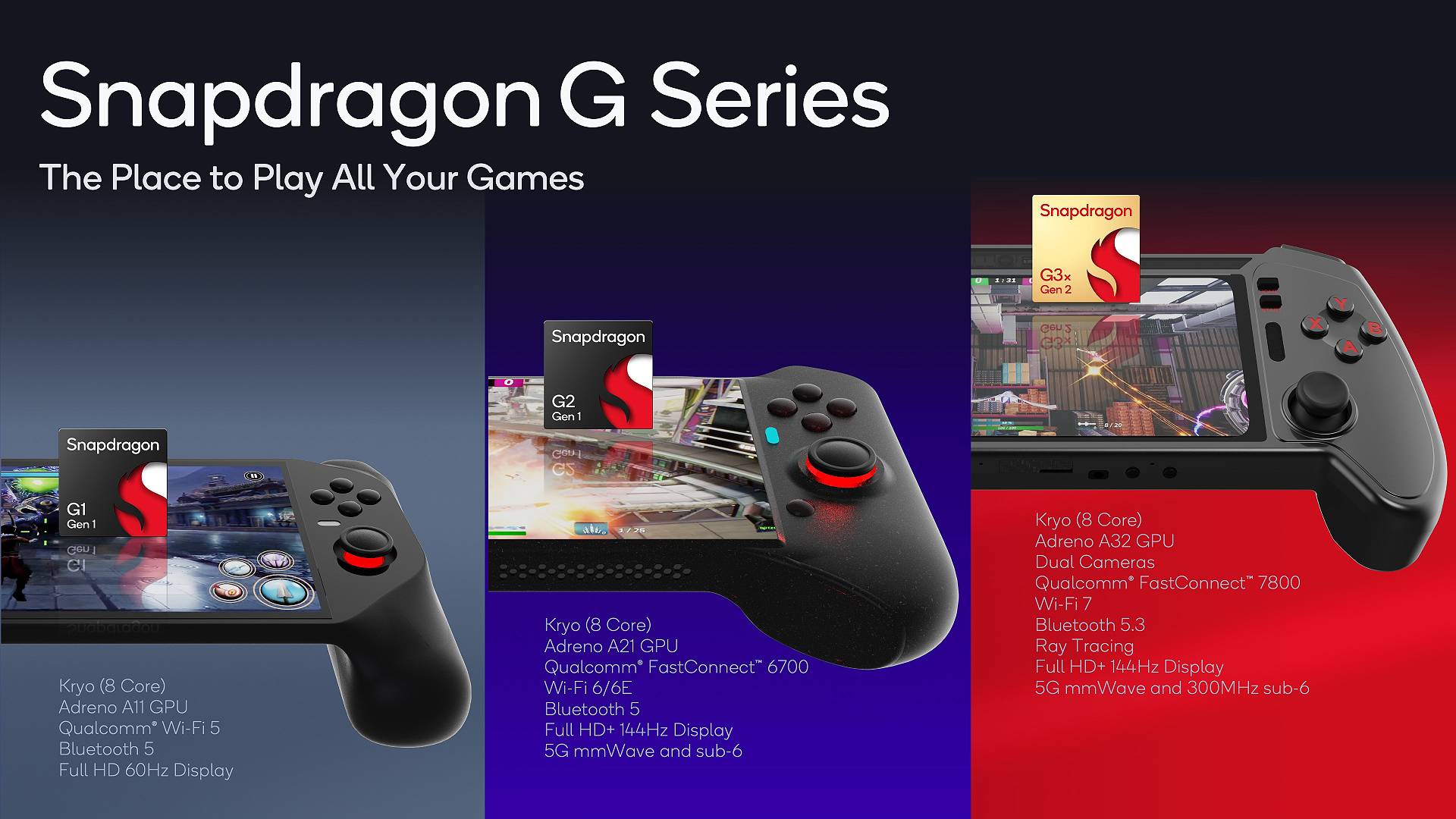Qualcomm's Snapdragon G Series chips want to bridge the gap between PC and mobile
A new wave of gaming handhelds is coming

Qualcomm has unveiled a new Snapdragon G series lineup, and the chips are set to shape the next wave of gaming handhelds. Rather than just targeting the mobile market, the SoC range also aims to power enthusiast-grade portables and streaming devices, with reference designs for the former including 144Hz screens and 12GB RAM. That’s not even the best part, as the company also expressed a desire to bridge the gap between mobile and PC gaming, which could change the handheld scene as we know it.
At the moment, there’s a pretty clear line between the best gaming handhelds for streaming and portable gaming PCs like the Steam Deck. Rather than being an outright bad thing, it means there’s a distinct range of devices that cater to different needs, whether you’re thirsty for high frame rates on the go or looking to access your library via the cloud. This is something Qualcomm seems to agree with us on, but it’s also about to challenge the status quo in the best way possible.
The brand new Snapdragon G Series family consists of three options – the G1 and G2 gen 1 and the G3x gen 2. If you’ve ever considered picking up a Razer Edge, you’ve likely heard of that latter chip’s predecessor, the G3X Gen 1. According to Qualcomm’s Vulkan benchmarks, the gen 2 SoC features up to three times the performance, the company unsurprisingly dubs it an “Enthusiast Class” chipset.



So, what about the other Snapdragon newbies? Well, the G2 will provide mobile players with punchy specs, while the G1 will be a go to for cloud streaming shenanigans. We’ve got a handy specs sheet above that should help hammer home the spec differences, as well as outline the sort of handheld you’ll find each dwelling within. Qualcomm has also shared some reference designs with us, which may or may not lay the foundations for future handhelds to come.
Bridging the platform gap
Qualcomm seems to have a specific vision in mind for the handheld market, and I’m not just referring to its reference designs. Sure, its blueprints are going to potentially help companies like Aya Neo and Ayn cook up pretty powerful devices and portable consoles, but I’m more interested in the idea of “Android+” this time around than the hardware itself.
What does Android+ mean? According to Qualcomm, it’s a phrase that sums up its ambitions to bridge the gap between mobile and AAA gaming platforms. While I’ve got no idea what it’ll mean in practice, the tech giant might be gunning to facilitate some sort of compatibility layer that’ll enable you to play fully fledged PC and console games on an Android device. At least that’s what makes the most sense hypothetically, as it’s not too different to Valve’s approach with the Steam Deck to running Windows releases.
We’ll be keeping a close eye out for handhelds armed with new Snapdragon G Series chips, and Qualcomm’s Android+ endeavors will hopefully become apparent soon. There’s a lot going on within the realm of portable gaming right now, and while the Lenovo Legion Go looks set to be the next proper Steam Deck competitor, the mobile market could become an unexpected threat.
Weekly digests, tales from the communities you love, and more
Already got Valve’s portable to hand? Why not check out the best Steam Deck dock and transform the handheld PC into a hybrid. Alternatively, take a peek at the best gaming laptops if you’re looking for something with a performance punch.

Phil is the Hardware Editor at GamesRadar and joined the team in 2023. In the past, they've also contributed to the likes of TechRadar, The Daily Star, the BBC, and PCGamesN, but these days, they specialize in testing the latest gaming handhelds, monitors, TVs, and PC components. They're also extremely nerdy about retro consoles and playing the classics on both new and old systems.


